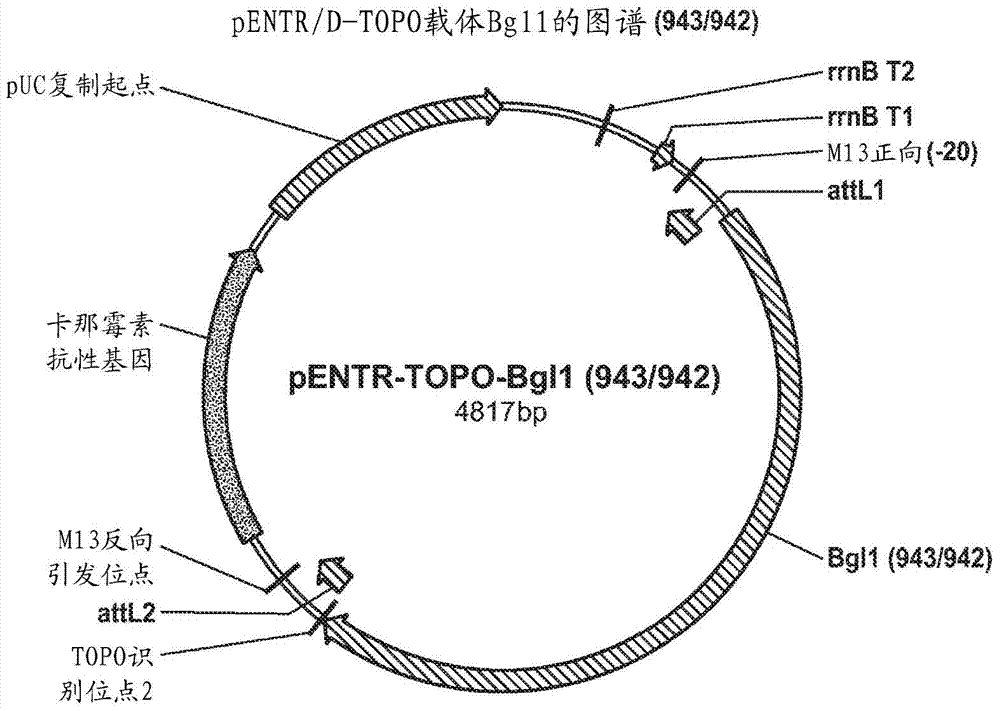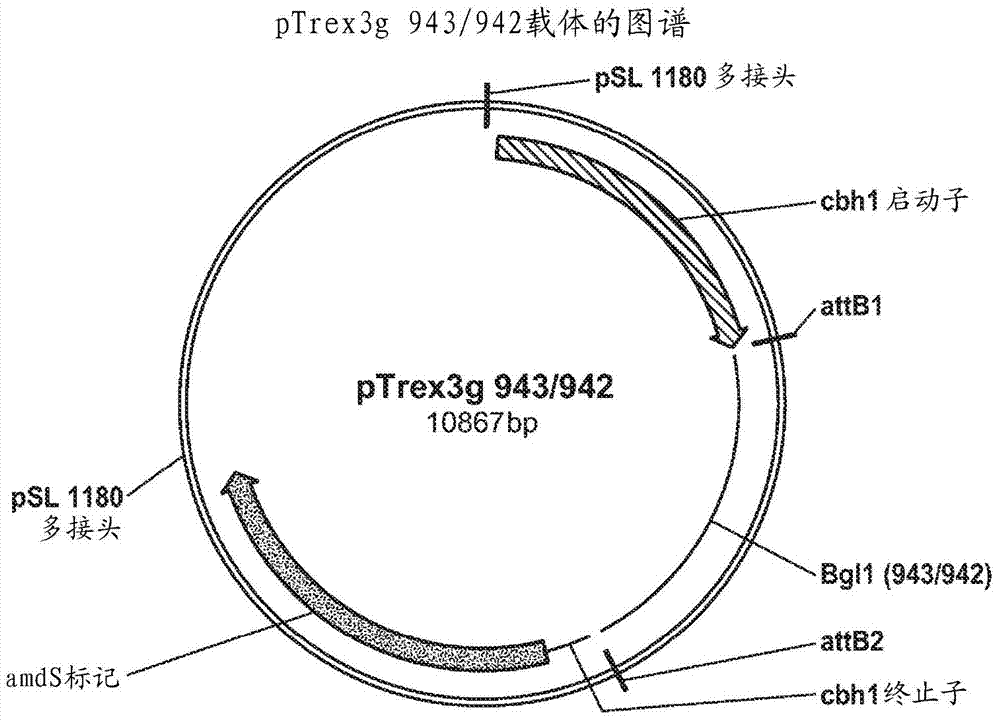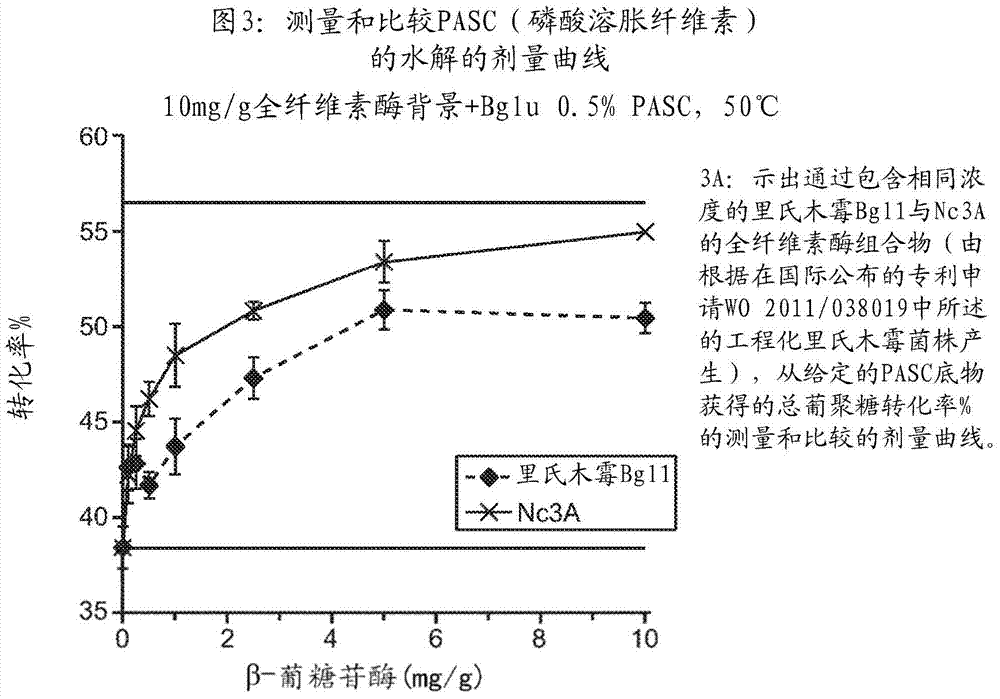Beta-glucosidase from neurospora crassa
A technology of glucosidase and hemicellulase, applied in the direction of glycosylase, enzyme, hydrolase, etc., can solve the problems of toxicity and low efficiency of crystalline cellulose
- Summary
- Abstract
- Description
- Claims
- Application Information
AI Technical Summary
Problems solved by technology
Method used
Image
Examples
example
[0224] The following examples are provided to demonstrate and illustrate certain preferred embodiments and aspects of the present disclosure and should not be construed as limiting.
example 1
[0226] 1-A. Cloning and Expression of Gene Expression of Nc3A and Benchmark Trichoderma reesei Bgl1
[0227] 1-A-a. Construction of Trichoderma reesei bgl1 expression vector
[0228] The N-terminal portion of the native T. reesei β-glucosidase gene bgl1 was codon optimized (DNA 2.0, Menlo Park, CA). This synthetic portion contained the first 447 bases of the enzyme coding region. This fragment was subsequently amplified by PCR using primers SK943 and SK941 (see below). Using primers SK940 and SK942 (see below), the remaining region of the native bgl1 gene was PCR amplified from a genomic DNA sample extracted from Trichoderma reesei strain RL-P37 (Sheir-Neiss, G et al., (1984) Appl . Microbiol. Biotechnol. 20:46-53 (Sheir-Neiss, G et al., 1984, Applied Microbiology and Biotechnology, Vol. 20, pp. 46-53)). These two PCR fragments of the bgl1 gene were fused together in a fusion PCR reaction using primers SK943 and SK942 as follows:
[0229] Forward primer SK943: (5'-CACC...
example 2
[0256] Example 2: Various Assays
[0257] 2-A. Protein concentration measurement by UPLC
[0258] Protein quantification was performed using an Agilent HPLC 1290 Infinity system and a Waters ACQUITY UPLC BEHC4 column (1.7 μm, 1×50 mm). Using a six minute program using an initial gradient from 5% to 33% acetonitrile (Sigma-Aldrich) in 0.5 minutes, followed by a gradient from 33% to 48% in 4.5 minutes, This was followed by a step gradient to a final 90% acetonitrile. A protein standard curve based on purified T. reesei Bgl1 was used to quantify the Nc3A polypeptide.
[0259] 2-B. Chloro-nitro-phenyl-glucoside (CNPG) hydrolysis assay
[0260] Two hundred (200) μL of 50 mM sodium acetate buffer, pH 5, was added to each well of the microtiter plate. Five (5) μL of enzyme diluted in 50 mM sodium acetate buffer (pH 5) was also added to each well. The plate was covered and allowed to equilibrate for 15 minutes at 37°C in an Eppendorf thermomixer. Twenty (20) μL of 2 mM 2-c...
PUM
 Login to View More
Login to View More Abstract
Description
Claims
Application Information
 Login to View More
Login to View More - Generate Ideas
- Intellectual Property
- Life Sciences
- Materials
- Tech Scout
- Unparalleled Data Quality
- Higher Quality Content
- 60% Fewer Hallucinations
Browse by: Latest US Patents, China's latest patents, Technical Efficacy Thesaurus, Application Domain, Technology Topic, Popular Technical Reports.
© 2025 PatSnap. All rights reserved.Legal|Privacy policy|Modern Slavery Act Transparency Statement|Sitemap|About US| Contact US: help@patsnap.com



